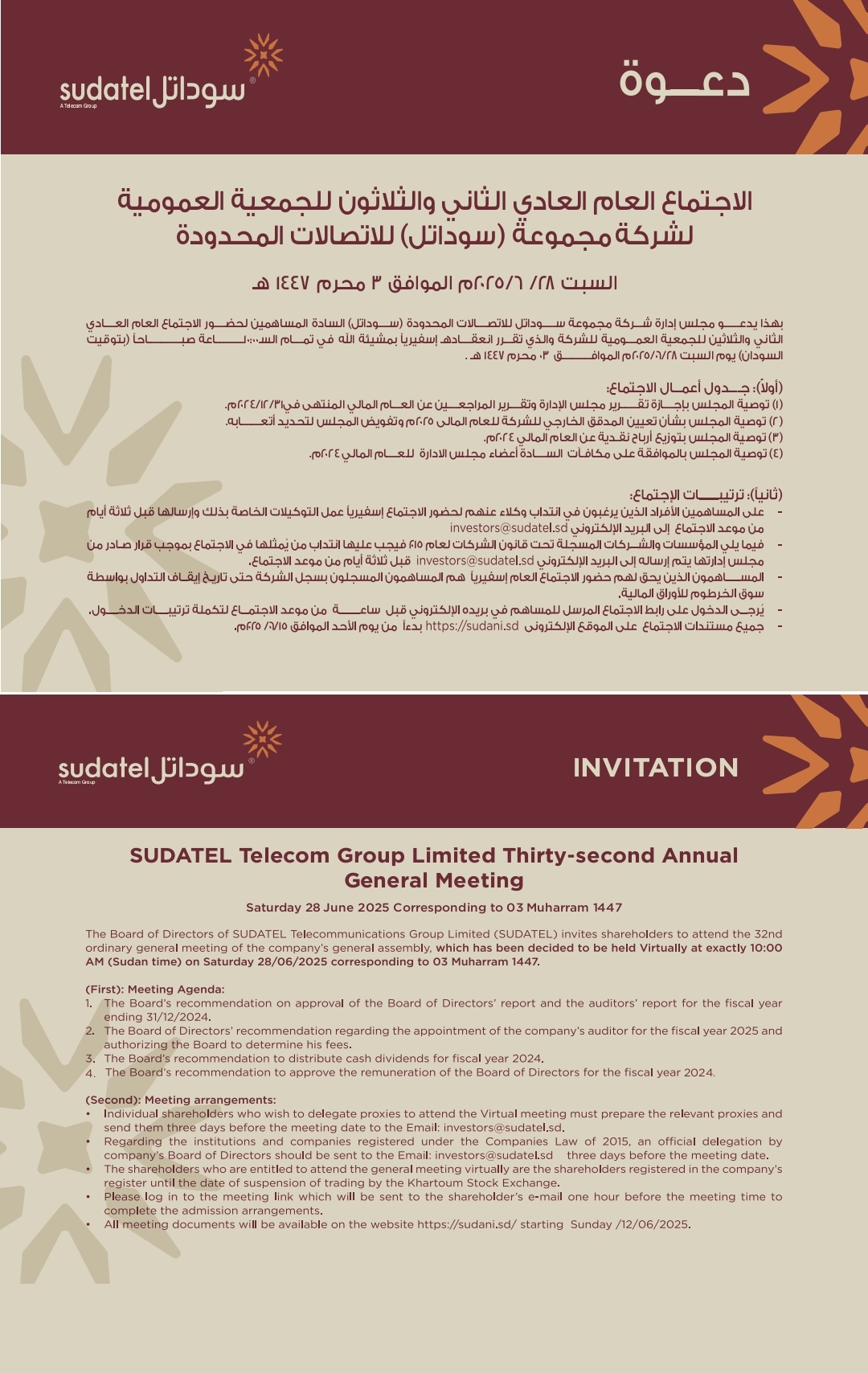د. محمد يوسف قباني يكتب: منهجيات الحوكمة لتحقيق التنمية المستدامة (25) Governance Methodologies for Achieving Sustainable Development (25) Dr. Mohamed Elgabbani..

د. محمد يوسف قباني يكتب: منهجيات الحوكمة لتحقيق التنمية المستدامة (25)
Governance Methodologies for Achieving Sustainable Development (25)
Dr. Mohamed Elgabbani..
التنمية المستدامة هي مفهوم متعدد الأبعاد يهدف إلى تحقيق التوازن بين النمو الاقتصادي والإدماج الاجتماعي وحماية البيئة. وتشكل الحوكمة الفعّالة عاملاً حاسماً في تحقيق التنمية المستدامة، لأنها توفر الإطار اللازم لاتخاذ القرارات وتنفيذ السياسات وتخصيص الموارد. وبدون
منهجيات الحوكمة السليمة، قد تصبح جهود الاستدامة مجزأة وغير فعّالة أو حتى غير منتجة. وتستكشف هذه المقالة منهجيات الحوكمة الرئيسية لتحقيق التنمية المستدامة، وتقدم الأمثلة والتوضيحات وتتناول التحديات التي تعيق تنفيذها.
تعرف الأمم المتحدة التنمية المستدامة بأنها “التنمية التي تلبي احتياجات الحاضر دون المساس بقدرة الأجيال القادمة على تلبية احتياجاتها الخاصة”. وهي تنطوي على ثلاثة ركائز رئيسية: التنمية الاقتصادية والمساواة الاجتماعية والاستدامة البيئية. وتشير الحوكمة في هذا السياق إلى العمليات والمؤسسات والآليات التي يتم من
خلالها اتخاذ القرارات وتنفيذها. وتلعب منهجيات الحوكمة المختلفة – مثل الحوكمة التشاركية والحوكمة اللامركزية والأطر التنظيمية والشراكات بين القطاعين العام والخاص – دوراً حيوياً في ضمان استدامة مبادرات التنمية في الأمد البعيد.
ستناقش هذه المقالة منهجيات الحوكمة المختلفة، موضحة دورها في الاستدامة بأمثلة من العالم الحقيقي. كما ستسلط الضوء على التحديات المرتبطة بتنفيذ هذه المنهجيات وتقترح حلولاً للتغلب على هذه العقبات.
منهجيات الحوكمة من أجل التنمية المستدامة
الحوكمة التشاركية
تتضمن الحوكمة التشاركية إشراك أصحاب المصلحة المتعددين – بما في ذلك الوكالات الحكومية والشركات ومنظمات المجتمع المدني والمواطنين – في عملية صنع القرار. تضمن هذه المنهجية أن تعكس السياسات والمشاريع مصالح متنوعة، مما يجعلها أكثر استدامة.
مثال:
تعزز اتفاقية آرهوس في أوروبا الوصول إلى المعلومات والمشاركة العامة في صنع القرار والوصول إلى العدالة في المسائل البيئية. يضمن هذا النهج الشفافية والشمول في الحوكمة البيئية.
التحديات:
ضمان المشاركة الهادفة، وخاصة للمجتمعات المهمشة.
التغلب على المقاومة البيروقراطية للمشاركة العامة.
إدارة الصراعات بين أصحاب المصلحة ذوي المصالح المختلفة.
الحوكمة اللامركزية
تعمل الحوكمة اللامركزية على تحويل سلطة صنع القرار من الحكومات المركزية إلى السلطات المحلية أو الإقليمية. تسمح هذه الطريقة بسياسات أكثر تحديدًا للسياق والتي تعالج احتياجات الاستدامة المحلية بشكل فعال.
مثال:
في البرازيل، تسمح الميزانية التشاركية على مستوى البلديات للمواطنين بتحديد كيفية تخصيص جزء من الميزانية العامة. وقد أدى هذا النظام إلى تحسين البنية الأساسية والتعليم والمبادرات البيئية في العديد من المدن.
التحديات:
خطر الفساد أو سوء الإدارة على المستوى المحلي.
التوزيع غير المتساوي للموارد بين المناطق.
القدرات الفنية المحدودة للحكومات المحلية.
الأطر التنظيمية وأدوات السياسة
إن الأطر القانونية والسياسية القوية ضرورية لفرض أهداف التنمية المستدامة. ويمكن للوائح أن تحدد معايير واضحة لحماية البيئة وحقوق العمال والمسؤولية الاجتماعية للشركات.
مثال:
تتضمن الصفقة الخضراء للاتحاد الأوروبي سياسات تفرض الحياد الكربوني، والتحول إلى الطاقة النظيفة، وحماية التنوع البيولوجي. ويتعين على الشركات الامتثال للقوانين البيئية الصارمة أو مواجهة العقوبات.
التحديات:
المقاومة من جانب الصناعات بسبب التكاليف المرتفعة الملموسة للامتثال.
آليات إنفاذ ضعيفة في بعض البلدان.
صعوبة في تحقيق التوازن بين النمو الاقتصادي واللوائح الصارمة.
الشراكات بين القطاعين العام والخاص
تتضمن الشراكات بين القطاعين العام والخاص التعاون بين الحكومات والكيانات الخاصة لتمويل وتنفيذ مشاريع الاستدامة. ويستفيد هذا النموذج من خبرة القطاع الخاص والموارد المالية مع ضمان الرقابة العامة.
مثال:
توفر مبادرة M-KOPA Solar في كينيا طاقة شمسية بأسعار معقولة للمجتمعات خارج الشبكة من خلال نظام الدفع حسب الاستخدام، والجمع بين الاستثمار الخاص والدعم الحكومي.
التحديات:
خطر إعطاء الأولوية للربح على المخاوف الاجتماعية والبيئية.
الافتقار المحتمل للمساءلة والشفافية.
الاعتماد على ظروف السوق لتحقيق الجدوى على المدى الطويل.
الحوكمة التكيفية والمستندة إلى الأدلة
تتضمن الحوكمة التكيفية التعلم المستمر والمرونة في صنع السياسات، باستخدام البيانات في الوقت الفعلي والبحث العلمي لتحسين مبادرات الاستدامة.
مثال:
يستخدم برنامج دلتا في هولندا استراتيجيات الإدارة التكيفية لحماية البلاد من ارتفاع مستويات سطح البحر. وهو يدمج باستمرار النتائج العلمية الجديدة في خطط الحماية من الفيضانات.
التحديات:
يتطلب استثمارًا كبيرًا في البحث والتكنولوجيا.
صعوبة في التنبؤ بالتغيرات البيئية والاقتصادية طويلة الأجل.
مقاومة التغيير داخل الهياكل البيروقراطية.
التحديات في تنفيذ منهجيات الحوكمة من أجل التنمية المستدامة
على الرغم من فعالية هذه المنهجيات، فإن العديد من التحديات تعيق تنفيذها الناجح:
الإرادة السياسية والاستقرار: يمكن أن يؤدي عدم الاستقرار السياسي ودورة السياسات القصيرة الأجل إلى تعطيل مبادرات الاستدامة طويلة الأجل.
الفساد والمؤسسات الضعيفة: يمكن أن يؤدي ضعف الحوكمة إلى سوء تخصيص الموارد وإعاقة إنفاذ السياسات.
قيود التمويل: تتطلب العديد من مشاريع التنمية المستدامة استثمارات كبيرة، والتي قد يكون من الصعب تأمينها.
المصالح المتضاربة: إن موازنة النمو الاقتصادي مع الاهتمامات البيئية والاجتماعية غالباً ما تؤدي إلى صراعات بين أصحاب المصلحة.
الافتقار إلى الوعي العام: فبدون التعليم والوعي المناسبين، قد لا يشارك المواطنون بشكل نشط في عمليات الحوكمة.
تلعب الحوكمة دوراً أساسياً في تحقيق التنمية المستدامة من خلال ضمان توافق السياسات والمشاريع مع الأهداف البيئية والاجتماعية والاقتصادية. إن الحوكمة التشاركية، وصنع القرار اللامركزي، والأطر التنظيمية القوية، والشراكات بين القطاعين العام والخاص، والحوكمة التكيفية كلها منهجيات حاسمة تساهم في الاستدامة. ومع ذلك، يجب معالجة التحديات مثل عدم الاستقرار السياسي، والفساد، والقيود المالية، والصراعات بين أصحاب المصلحة لتعزيز فعاليتها.
للتغلب على هذه التحديات، يجب على الحكومات والمؤسسات إعطاء الأولوية للشفافية وبناء القدرات والتخطيط الطويل الأجل. إن التعاون بين القطاعين العام والخاص، فضلاً عن المشاركة النشطة للمواطنين، هو المفتاح لضمان فعالية جهود التنمية المستدامة واستمرارها. ومن خلال منهجيات الحوكمة القوية، يمكن للمجتمعات أن تقترب من مستقبل مزدهر ومستدام للأجيال القادمة.
Sustainable development is a multidimensional concept that aims to balance economic growth, social inclusion, and environmental protection. Effective governance is a crucial factor in achieving sustainable development, as it provides the framework for decision-making, policy
implementation, and resource allocation. Without sound governance methodologies, sustainability efforts can become fragmented, inefficient, or even counterproductive. This essay explores the key governance methodologies for
achieving sustainable development, providing examples, clarifications, and addressing the challenges that hinder their implementation.
Sustainable development is defined by the United Nations as “development that meets the needs of the present without compromising the ability of future generations to meet their own needs.” It involves three main pillars: economic development, social equity, and
environmental sustainability. Governance, in this context, refers to the processes, institutions, and mechanisms through which decisions are made and implemented. Different governance methodologies—such as participatory governance, decentralized governance, regulatory frameworks, and
public-private partnerships—play a vital role in ensuring that development initiatives are sustainable in the long run.
This essay will discuss various governance methodologies, illustrating their role in sustainability with real-world examples. It
will also highlight the challenges associated with implementing these methodologies and propose solutions to overcome these obstacles.
Governance Methodologies for Sustainable Development
Participatory Governance
Participatory governance involves engaging multiple stakeholders—including government agencies, businesses, civil society organizations, and citizens—in the decision-making process. This methodology ensures that policies and projects reflect diverse interests, making them more sustainable.
Example:
The Aarhus Convention in Europe promotes access to information, public participation in decision-making, and access to justice in environmental matters. This approach ensures transparency and inclusiveness in environmental governance.
Challenges:
Ensuring meaningful participation, especially for marginalized communities.
Overcoming bureaucratic resistance to public involvement.
Managing conflicts among stakeholders with differing interests.
Decentralized Governance
Decentralized governance shifts decision-making power from central governments to local or regional authorities. This method allows for more context-specific policies that address local sustainability needs effectively.
Example:
In Brazil, participatory budgeting at the municipal level allows citizens to decide how a portion of the public budget is allocated. This system has improved infrastructure, education, and environmental initiatives in many cities.
Challenges:
Risk of corruption or mismanagement at the local level.
Unequal distribution of resources among regions.
Limited technical capacity of local governments.
Regulatory Frameworks and Policy Instruments
Strong legal and policy frameworks are essential for enforcing sustainable development goals. Regulations can set clear standards for environmental protection, labor rights, and corporate responsibility.
Example:
The European Union’s Green Deal includes policies that enforce carbon neutrality, clean energy transition, and biodiversity protection. Companies must comply with stringent environmental laws or face penalties.
Challenges:
Resistance from industries due to perceived high costs of compliance.
Weak enforcement mechanisms in some countries.
Difficulty in balancing economic growth with strict regulations.
Public-Private Partnerships (PPPs)
PPPs involve collaboration between governments and private entities to fund and implement sustainability projects. This model leverages private sector expertise and financial resources while ensuring public oversight.
Example:
Kenya’s M-KOPA Solar initiative provides affordable solar energy to off-grid communities through a pay-as-you-go system, combining private investment with government support.
Challenges:
Risk of prioritizing profit over social and environmental concerns.
Potential lack of accountability and transparency.
Dependence on market conditions for long-term viability.
Adaptive and Evidence-Based Governance
Adaptive governance involves continuous learning and flexibility in policy-making, using real-time data and scientific research to improve sustainability initiatives.
Example:
The Netherlands’ Delta Programme uses adaptive management strategies to protect the country from rising sea levels. It continuously integrates new scientific findings into its flood protection plans.
Challenges:
Requires substantial investment in research and technology.
Difficulty in predicting long-term environmental and economic changes.
Resistance to change within bureaucratic structures.
Challenges in Implementing Governance Methodologies for Sustainable Development
Despite the effectiveness of these methodologies, several challenges hinder their successful implementation:
Political Will and Stability: Political
instability and short-term policy cycles can disrupt long-term sustainability initiatives.
Corruption and Weak Institutions: Poor governance can lead to misallocation of resources and hinder policy enforcement.
Funding Constraints: Many sustainable
development projects require significant investment, which can be difficult to secure.
Conflicting Interests: Balancing economic growth with environmental and social concerns often leads to conflicts among stakeholders.
Lack of Public Awareness: Without proper education and awareness, citizens may not actively participate in governance processes.
Governance plays a fundamental role in achieving sustainable development by ensuring that policies and projects align with environmental, social, and economic goals. Participatory governance,
decentralized decision-making, strong regulatory frameworks, public-private partnerships, and adaptive governance are all crucial methodologies that contribute to sustainability. However, challenges such as political instability, corruption, financial constraints, and stakeholder conflicts must be addressed to enhance their effectiveness.
To overcome these challenges, governments and institutions must prioritize transparency, capacity-building, and long-term planning. Collaboration between the public and private sectors, as well as active citizen engagement, is key to ensuring that sustainable development efforts are
effective and enduring. Through robust governance methodologies, societies can move closer to a future that is both prosperous and sustainable for generations to come.








